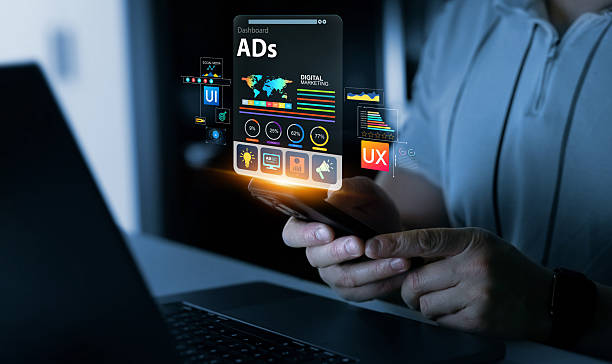1. What is On-Page SEO and Why is it Crucial for Your Business?

On-Page SEO, or #On_Page_SEO, is a set of actions and techniques performed within your website to improve the ranking of your pages in search engine results and attract more organic traffic.
These actions include optimizing content, site structure, keywords, images, and other technical aspects.
In fact, On-Page SEO helps search engines better understand your content and assess its importance for users.
Without properly executing this process, even with the best content, you might get lost among competitors.
The importance of On-Page SEO is such that many experts consider it the foundation of any SEO strategy; because before any external action (Off-Page SEO), you must ensure your site is internally prepared and optimized.
Search engine optimization is not possible solely by focusing on external link building; it must also be well-managed from within the site.
This explanatory and educational approach gives you a deeper understanding of the processes.
If you have a question in your mind about why your site isn’t ranking despite having good content, the answer might lie in weak On-Page SEO.
Learning these skills is essential for any business seeking a strong online presence.
This process requires technical knowledge as well as a deep understanding of user behavior and Google’s algorithms.
Is your company’s website as professional and trustworthy as it should be? Create an online presence that reflects your credibility and attracts more customers with specialized corporate website design by Rasawp.
✅ Build a powerful and professional image for your brand
✅ Convert visitors into real customers
⚡ Get a free consultation now!
2. On-Page SEO Keyword Discovery: The First Step Towards Success
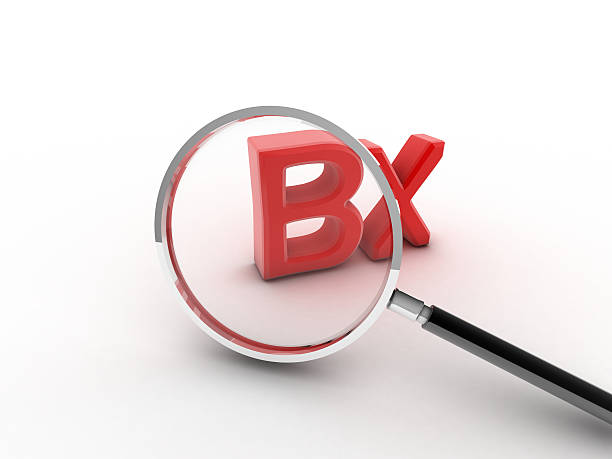
#Keywords are the soul of every article and page, and the foundation of #On_Page_SEO.
Discovering appropriate keywords is the first step in formulating your On-Page SEO strategy.
This helps you know exactly what your audience is looking for and tailor your content to their needs.
Tools like Google Keyword Planner, Ahrefs, and Semrush provide significant help in this process.
Finding only high-volume keywords isn’t enough; you should look for keywords that are accessible in terms of competition and encompass user intent.
For example, the phrase “buy phone” has a different intent than “phone review,” and appropriate content should be created for each.
This specialized stage requires precise data analysis.
Sometimes, Long-Tail Keywords, which have lower search volume but are much more specific, can yield better results because they have less competition and attract more targeted users.
There are many guidelines for finding these types of keywords by examining forums, frequently asked questions, and even Google’s “People also ask” section.
Your content should address all aspects related to the main keyword and provide a complete answer to the user’s needs.
Choosing the right keywords is the basis of any effective optimization for On-Page SEO and can determine your success or failure.
3. Content Optimization for On-Page SEO: The Key to Stability in Results
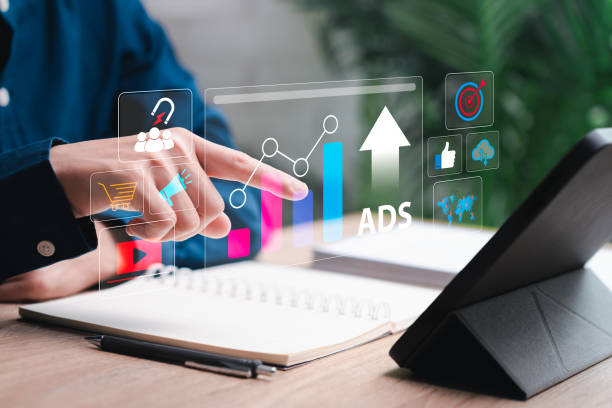
#Content_Optimization forms the core of #On_Page_SEO.
After discovering keywords, it’s time to intelligently integrate them into your content.
This doesn’t just mean repeating the keyword; it should be used naturally and purposefully in the text, headings (H1, H2, H3), paragraphs, and even image filenames.
Your content should be specialized, engaging, and at the same time informative to encourage users to stay longer on the page.
Content length also matters; studies have shown that longer, more comprehensive content (usually over 1500 words) tends to rank higher, provided its quality is maintained and it’s not merely for word count inflation.
Using #Internal_Linking within the text to other relevant pages on your site also boosts the power of On-Page SEO and helps search engines understand the site’s structure.
Use appropriate formatting like lists, bolding important text, and short paragraphs for better readability.
Remember that Google’s main goal is to provide the best and most relevant result to the user, so your content should fully cover user needs.
Below is a table demonstrating how to use headings and keywords:
| Heading Level | Heading Example | Notes on On-Page SEO |
|---|---|---|
| H1 | Comprehensive Guide to On-Page SEO for Your Website | Includes main keyword (only one H1 per page) |
| H2 | Important Factors in On-Page SEO for Your Site | Includes main keyword or its synonym, content segmentation |
| H3 | Optimizing Title Tags and Meta Descriptions | Includes secondary keywords, organizing subcategories |
| H4 | The Importance of On-Page SEO in Organic Growth | More details in a specific section |
4. Technical Aspects of On-Page SEO: Speed and Accessibility

#Technical_Aspects are another crucial part of #On_Page_SEO that are often overlooked.
Optimizing site loading speed, URL structure, using canonical tags, and mobile compatibility are all important factors that directly impact your site’s ranking and user experience.
A slow or mobile-inaccessible site, even with the best content, cannot achieve high rankings.
Tools like Google PageSpeed Insights can help you identify speed issues.
Short, descriptive, and keyword-rich URLs are not only easier for users to understand but also help search engines comprehend page content.
Correct use of Canonical Tags is essential to prevent duplicate content issues, especially on sites with multiple versions of a single page.
Ensuring your website is fully “mobile-friendly” is crucial, given the significant increase in mobile searches.
This specialized and explanatory aspect of On-Page SEO requires more technical knowledge, but its impact on the overall success of your strategy is undeniable.
Fixing technical errors, improving your Sitemap, and the Robots.txt file also help search engine crawlers navigate and index your site more easily.
Does your current website convert visitors into customers, or does it drive them away? Solve this problem forever with professional corporate website design by Rasawp!
✅ Build strong credibility and branding
✅ Attract targeted customers and increase sales
⚡ Get a free consultation now!
5. The Power of Internal Linking for On-Page SEO
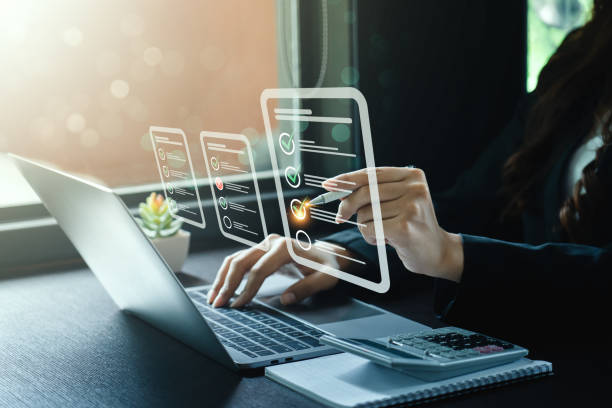
#Internal_Linking is a very powerful and often underestimated technique in #On_Page_SEO.
This process involves creating links from one page on your website to another page within the same website.
These links play a crucial role in guiding users and search engine crawlers throughout your site.
Proper internal linking helps distribute “Page Authority” across the site; meaning the power and credibility of a strong page are transferred to weaker pages, ultimately improving the overall site ranking.
Additionally, internal links enhance user experience by directing users to relevant and useful content, increasing their time on the site.
Choosing appropriate Anchor Text that includes relevant keywords is very important.
Avoid generic anchor texts like “click here” and instead use phrases that clearly describe the content of the destination page.
An analytical strategy for internal linking can include identifying orphan pages (pages with no internal links pointing to them) and rectifying this issue.
This vital step in On-Page SEO can significantly impact the visibility of your pages in search results.
A tree-like or hierarchical site structure shows search engines which pages are more important and should receive more attention.
By linking from main and powerful pages to target pages, you increase their credibility and value.
6. Image Optimization: An Important Role in On-Page SEO
![]()
#Image_Optimization is often overlooked in #On_Page_SEO discussions, but it plays a crucial role in improving rankings and user experience.
High-quality images can make your content more appealing, but if not optimized correctly, they can significantly slow down your site’s loading speed.
To start, use appropriate image formats for the web like WebP, which have smaller file sizes than JPG and PNG while maintaining quality.
Reducing image size without compromising quality is an important step.
Second, using Alt Text (alternative text) for all images is essential.
Alt Text is a brief and accurate description of the image content, which is not only helpful for visually impaired users but also assists search engines in understanding the image content and displaying it in image search results.
Ensure that Alt Text includes a keyword relevant to your page, but avoid Keyword Stuffing.
Image filenames should also be descriptive and include keywords (e.g., “on-page-seo-graph.webp” instead of “image123.webp”).
Adding images to your XML sitemap also helps search engines index your images faster.
This educational and guiding approach helps you leverage the full potential of your images in On-Page SEO.
Image optimization not only aids SEO but also leads to improved website accessibility, which is itself an important ranking factor for Google.
7. Meta Tags and Snippets in On-Page SEO

#Meta_Tags and #Snippets are important parts of #On_Page_SEO that are displayed to users in search results and have a significant impact on Click-Through Rate (CTR).
The most important of these are the Title Tag and Meta Description.
The Title Tag is the main title of your page that appears in the browser tab and as the first line of the search result.
It should be engaging and include the main keyword to encourage users to click.
Its ideal length is usually between 50 and 60 characters to be fully displayed in search results.
The Meta Description is a brief summary of the page’s content displayed below the title in search results.
Although it does not directly affect ranking, an engaging and persuasive meta description can significantly increase your click-through rate.
It should include relevant keywords and a Call to Action.
Structured Data (Structured Data) or Schema (Schema Markup) also helps search engines better understand your content and display Rich Snippets in search results.
This can increase your site’s visibility.
This specialized section of On-Page SEO requires high precision in writing, as it directly relates to the user’s first interaction with your site in search results.
Below is a table comparing good and bad meta descriptions:
| Meta Description Type | Example | Notes on On-Page SEO and CTR |
|---|---|---|
| Bad | Here we have various content about On-Page SEO. On-Page SEO training, On-Page SEO guide, On-Page SEO tips. |
Incomprehensible, full of keywords (keyword stuffing), low user appeal. Low CTR. |
| Good | Improve your site’s ranking on Google with our comprehensive On-Page SEO guide. Practical and expert tips for content and site structure optimization. Start today! |
Clear, includes main keyword, descriptive, engaging, contains a call to action. High CTR. |
8. The Role of User Experience (UX) in Strengthening On-Page SEO
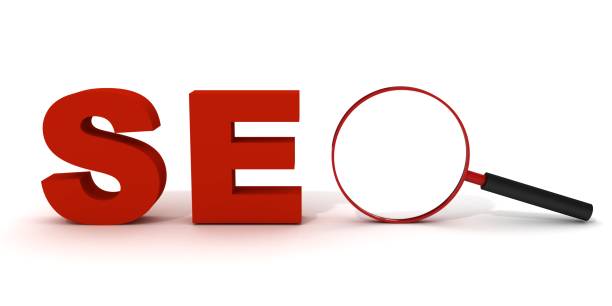
#User_Experience or #UX is a very important and growing factor in #On_Page_SEO.
Google increasingly emphasizes the importance of user experience on websites and considers positive user experience signals as ranking factors.
Metrics such as Dwell Time, Bounce Rate, and the number of pages visited per session are all indicators of user experience quality.
If users quickly leave your site or spend little time on it, this is a negative signal for Google, indicating that your content has not adequately met their needs.
To improve UX and consequently On-Page SEO, you should pay attention to responsive design, easy navigation, readable and engaging content, and clear calls to action.
Can users easily find what they are looking for? Is your site’s design visually appealing and user-friendly? These are thought-provoking questions you should ask yourself.
Improving user experience not only helps your ranking but also increases conversion and customer loyalty.
This is an analytical approach that shows how indirect factors can also have a profound impact on your On-Page SEO performance.
A site with excellent UX encourages users to return and sends positive signals to search engines.
Are you tired of your company’s website not being seen as it deserves and losing potential customers? Solve this problem forever with professional and effective website design by Rasawp!
✅ Increase brand credibility and gain customer trust
✅ Attract targeted sales leads
⚡ Contact us now for a free consultation!
9. Monitoring and Analyzing On-Page SEO Performance: Tools for Success

#Monitoring_and_Analysis of #On_Page_SEO performance is essential to ensure the effectiveness of your strategies.
Without careful data review, you cannot identify your strengths and weaknesses and implement necessary improvements.
Tools like Google Search Console and Google Analytics are excellent information sources for this purpose.
Search Console provides you with information about the keywords you rank for, crawl errors, mobile usability issues, and the indexing status of your pages.
Google Analytics provides data on site traffic, user behavior (such as bounce rate, dwell time, and pages visited), traffic sources, and conversions.
By regularly reviewing these reports, you can identify positive and negative trends and make data-driven decisions to improve your On-Page SEO.
For example, if you notice a particular page has a high bounce rate, it might be an indication that its content needs revision or isn’t meeting user expectations.
This informative and guiding step helps you avoid moving blindly and continuously optimize your On-Page SEO strategy.
Remember that SEO is an ongoing process and requires continuous monitoring and improvement to always stay competitive.
10. Common Mistakes and Future Trends in On-Page SEO

On the path of #On_Page_SEO, there are common mistakes that can render your efforts fruitless.
One of the biggest mistakes is Keyword Stuffing, which is not only penalized by Google but also severely degrades user experience.
Ignoring site speed, lack of mobile optimization, not using Alt Text for images, and neglecting internal linking are also common mistakes.
But where is the future of On-Page SEO headed? With the advent of artificial intelligence and advanced language models, search engines’ understanding of content is becoming deeper and more complex.
Focusing on Search Intent and providing comprehensive content that addresses all aspects of a topic will become even more important.
Optimizing for voice search, which is on the rise, will also soon become a priority; this requires content that answers user questions directly and concisely.
The E-A-T principle (Expertise, Authoritativeness, Trustworthiness) is also increasingly influencing website rankings, especially in health and financial sectors.
Therefore, creating authoritative content and expert authors become more important.
This analytical and engaging approach not only clarifies mistakes but also helps you prepare for future challenges and opportunities in On-Page SEO.
You must constantly update your knowledge and adapt to changes in search engine algorithms to maintain your position in the competitive online world.
Frequently Asked Questions
| Question | Answer |
|---|---|
| What is On-page SEO? | On-page SEO refers to a set of actions performed within a website and on page content to achieve a better ranking in search results. |
| Why is On-page SEO important for a website? | On-page SEO helps search engines better understand your page content and assess its importance. It also provides a better user experience for visitors. |
| What are the most important On-page SEO factors? | Key factors include keyword optimization, content quality, Title Tag, Meta Description, URL structure, heading tags (H1-H6), internal linking, and image optimization. |
| What role does the Title Tag play in On-page SEO? | The Title Tag is one of the most important On-page SEO factors that displays your page’s title in search results and the browser tab. It should be engaging and include the main keyword. |
| What is the importance of Meta Description in On-page SEO? | The Meta Description provides a summary of the page’s content, and although it doesn’t directly affect ranking, it can significantly increase the Click-Through Rate (CTR) by encouraging users to click. |
| How are keywords used in On-page SEO? | Keywords are phrases that users employ to search for information on search engines. Appropriate and natural use of them in content helps the search engine identify the page’s topic. |
| What is internal linking and what is its benefit in On-page SEO? | Internal linking means creating links between different pages of a website. This helps distribute page authority, assists search engine bots in crawling, and improves user experience. |
| How does image optimization affect On-page SEO? | Image optimization involves compressing size, using appropriate Alt Text, and proper file naming. This improves page loading speed and helps search engines understand image content. |
| What does high-quality content mean in On-page SEO? | High-quality content means content that is comprehensive, accurate, unique, up-to-date, user-friendly, and meets user needs. |
| What role does URL structure play in On-page SEO? | Readable, short, and keyword-rich URLs help search engines and users better understand page content and improve user experience. |
And other services of RasaWeb Advertising Agency in the field of advertising
Smart Advertising Campaign: A new service to increase click-through rates through SEO-driven content strategy.
Smart Brand Identity: Revolutionize customer attraction with customized user experience.
Smart Data Analysis: A fast and efficient solution to increase click-through rates with a focus on marketing automation.
Smart Social Media: A new service to increase sales through custom programming.
Smart Marketing Automation: A new service for increasing digital branding through SEO-driven content strategy.
And over a hundred other services in the field of internet advertising, advertising consultation, and organizational solutions
Internet Advertising | Advertising Strategy | Advertorial
Resources
- Complete On-Page SEO Training on Iran SEO
- Comprehensive Guide to On-Page SEO (On-Page SEO) – SEO20
- What is On-Page SEO and Why is it Important? – Webramz
- On-Page SEO Techniques to Improve Site Ranking – Digital Marketing
? Ready to transform your business in the digital world? Rasaweb Afarin Digital Marketing Agency, with expertise in WordPress website design and comprehensive online marketing strategies, paves your path to success.
📍 Tehran, Mirdamad Street, next to Central Bank, Southern Kazeroun Alley, Ramin Alley, No. 6


